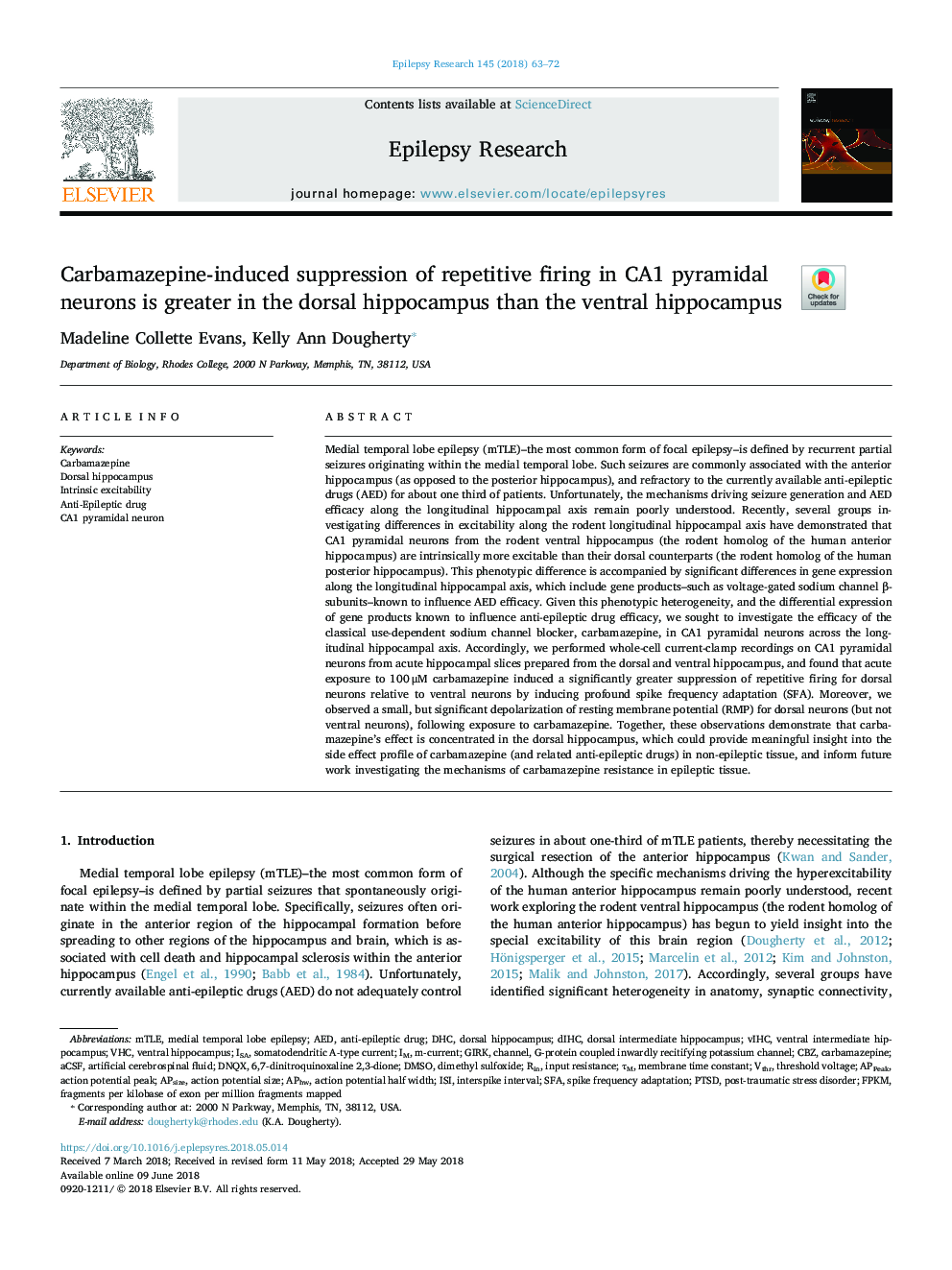| Article ID | Journal | Published Year | Pages | File Type |
|---|---|---|---|---|
| 8684036 | Epilepsy Research | 2018 | 10 Pages |
Abstract
Medial temporal lobe epilepsy (mTLE)-the most common form of focal epilepsy-is defined by recurrent partial seizures originating within the medial temporal lobe. Such seizures are commonly associated with the anterior hippocampus (as opposed to the posterior hippocampus), and refractory to the currently available anti-epileptic drugs (AED) for about one third of patients. Unfortunately, the mechanisms driving seizure generation and AED efficacy along the longitudinal hippocampal axis remain poorly understood. Recently, several groups investigating differences in excitability along the rodent longitudinal hippocampal axis have demonstrated that CA1 pyramidal neurons from the rodent ventral hippocampus (the rodent homolog of the human anterior hippocampus) are intrinsically more excitable than their dorsal counterparts (the rodent homolog of the human posterior hippocampus). This phenotypic difference is accompanied by significant differences in gene expression along the longitudinal hippocampal axis, which include gene products-such as voltage-gated sodium channel β-subunits-known to influence AED efficacy. Given this phenotypic heterogeneity, and the differential expression of gene products known to influence anti-epileptic drug efficacy, we sought to investigate the efficacy of the classical use-dependent sodium channel blocker, carbamazepine, in CA1 pyramidal neurons across the longitudinal hippocampal axis. Accordingly, we performed whole-cell current-clamp recordings on CA1 pyramidal neurons from acute hippocampal slices prepared from the dorsal and ventral hippocampus, and found that acute exposure to 100â¯Î¼M carbamazepine induced a significantly greater suppression of repetitive firing for dorsal neurons relative to ventral neurons by inducing profound spike frequency adaptation (SFA). Moreover, we observed a small, but significant depolarization of resting membrane potential (RMP) for dorsal neurons (but not ventral neurons), following exposure to carbamazepine. Together, these observations demonstrate that carbamazepine's effect is concentrated in the dorsal hippocampus, which could provide meaningful insight into the side effect profile of carbamazepine (and related anti-epileptic drugs) in non-epileptic tissue, and inform future work investigating the mechanisms of carbamazepine resistance in epileptic tissue.
Keywords
AEDMTLEDNQXGIRKM-currentvHCFPKMaCSFSFADHCτmCbzCA1 pyramidal neuronDMSOISIpost-traumatic stress disorderPTSDintrinsic excitabilityanti-epileptic drugDimethyl sulfoxideRINmembrane time constantSpike frequency adaptationMedial temporal lobe epilepsyinterspike intervalFragments Per Kilobase of exon per Million fragments mappedartificial cerebrospinal fluidinput resistanceISAventral hippocampusdorsal hippocampusThreshold voltagecarbamazepine
Related Topics
Life Sciences
Neuroscience
Neurology
Authors
Madeline Collette Evans, Kelly Ann Dougherty,
